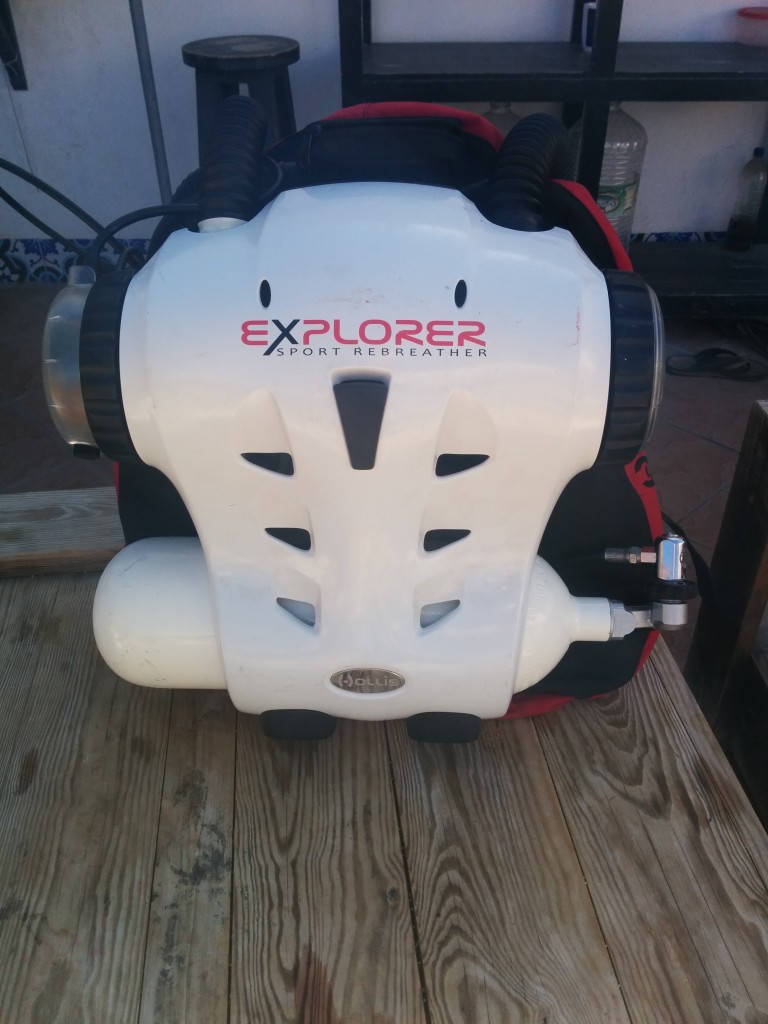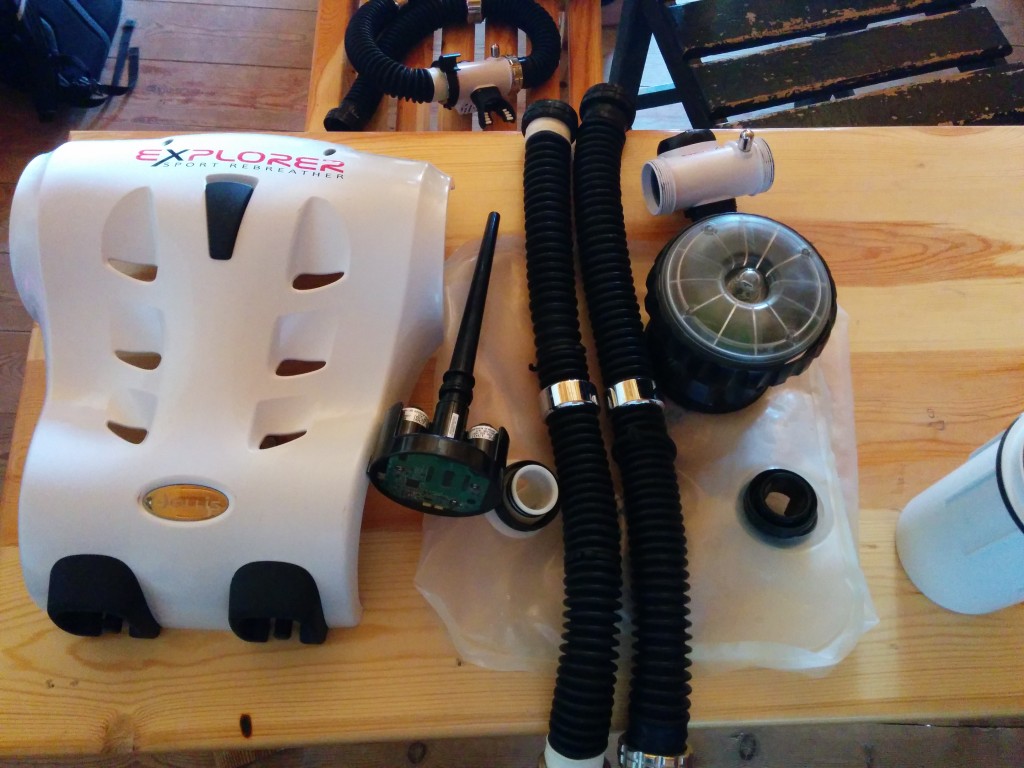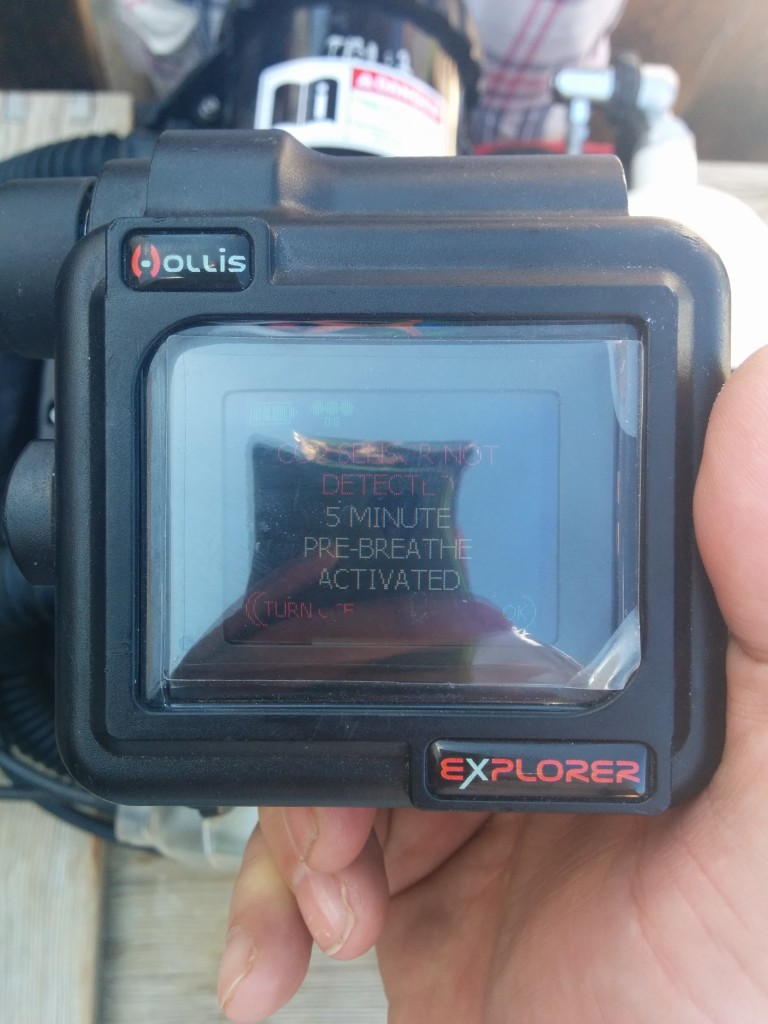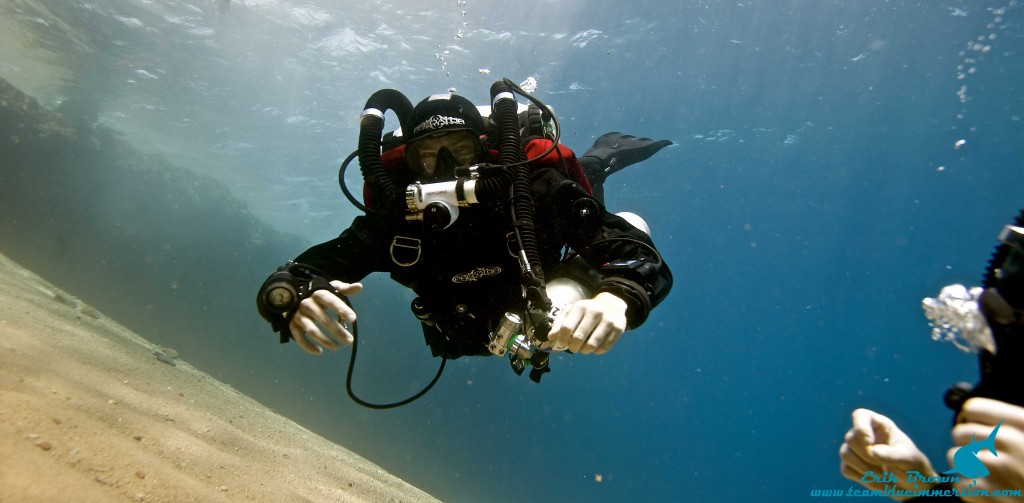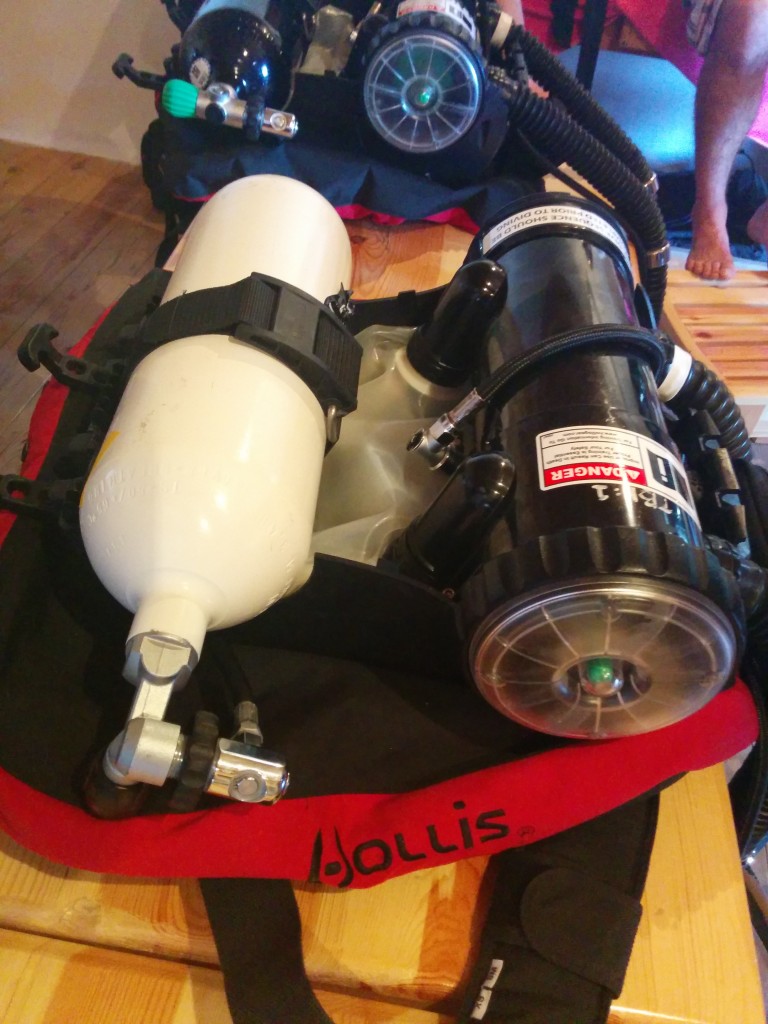After many months spent watching friend after friend post pictures of the Hollis Explorer on their Facebook timelines, I finally got the chance to give the unit a try myself. I was lucky to find myself on a business trip to Dahab, Egypt at the end of February, which meant I could drop in on my good friends at Team Blue Immersion who had two of the Hollis Explorer units waiting.
Tech specs
- Nitrox Electronically Controlled Hybrid – uses readily available Nitrox in 32-40%
- Simple user interface is easy to learn and easy to dive
- Automated Pre-dive Setup assures the Explorer is prepared for the dive
- Automated Breathing Loop control gives minimal bubbling and hydrostatically controlled buoyancy
- Bail-out mouthpiece gives a quick one handed operation from closed circuit to open circuit
- Simple Green or Red primary display
- Scrubber thermal monitoring and optional CO2 sensing assures good gas in the breathing loop
- PPO2 intelligently controlled for a proper balance of PP02 and bottom time
- Automated dive data logging
- Back mounted counterlungs with streamlined cover to offer good protection
- Modular component design makes it easy to setup and clean
- Choice of BC: either traditional Jacket or Back inflate style
- Explorer User Manual Download
After a few days of hard work I finally had some time to get in the water; unfortunately my day off was also the windiest and coldest day of my 10 days in Egypt. Having traveled without my dive gear and with a water temp of only 70 F (21 C) I needed to find a drysuit to borrow quickly — big thanks to Dimitri Galle for the unconditional loan. With the rest of the gear begged and borrowed from friends I was ready to get try my first rebreather dive.
What and Why?
Without getting too technical, rebreathers have four advantages over a standard open-circuit scuba setup.
1. Silence
Compared to traditional open-circuit scuba where each exhalation causes noisy bubbles, rebreathers either have no bubbles, or in the case of semi-closed circuit, many fewer bubbles. This reduction in noise allows for better and closer interactions with marine life, making the setup perfect for photographers.
2. Efficient use of gas
The biggest advantage over traditional open-circuit scuba is greatly increased gas-use efficiency. Instead of using only a fraction of the available O2 per breath and losing the rest on your exhalation, rebreathers let you recycle this O2, which means less gas and longer dives.
3. Decompression efficiency
Rebreathers ensure that you are breathing the perfect gas for the depth, not just perfect for tec diving, but also allowing recreational divers to dive longer profiles within NDL.
4. Warm gas
We’ve all had dry mouth while on open-circuit. This dry, cold gas also affects your body temperature, as you expel body head with each breath. A rebreather recycles warm exhaled air, so you continuously breathe warm moist air, retaining warmth and feeling more comfortable.
Hollis Explorer recreational rebreather
Hollis calls the Explorer a hybrid system that is neither fully closed nor purely semi-closed. It uses a single gas; nitrox that is controlled by the computer to achieve optimal PPO2 and dive time. It also looks like something a Storm Trooper might wear, or as I prefer to think of it, like a Boba Fetts backpack.
As this was only a try dive and not a course, we started the day with a shortened presentation on the technical details of rebreather diving, and the Hollis Explorer unit in particular. Next came the disclaimers and liability releases, which made the paperwork for a PADI course look like nothing.
Unit Setup
After the paper work came the practical exploration. With two full units striped down and on the table in front of us, we were lead through the process and procedures for putting the units together by our instructor Aron Arngrimsson. The process was straightforward and Hollis has put much effort into making the Explorer easy to assemble, as I found out when it was my turn to put the unit together. Making sure all connections were greased and fastened in the right places was simple, though I think there is some scope for improvement for connecting the counter lungs, as there is potential to damage them if you are careless or snag them. As you can see from the pictures, the parts are all generally plug-and-play, and after one or two setups I think you will know exactly what goes where and at which stage of the setup.
Once the unit is fully assembled and you start it up to run through the final pre-dive checks, you have two options depending on whether you have a CO2 sensor or not. If you don’t have one then you will need to perform a full 5-minute pre-dive breathe, which involves breathing through the unit in a steady, normal manor. Get comfortable and take your mind off distractions, because if at any stage during these 5 minutes you don’t breathe at the required level, the computer will terminate the test and you’ll have to start again from the beginning. This is only slightly annoying when your buddies make you laugh after 20 seconds but plain annoying at 4 minutes.
In the Water
Once my pre-dive checks were completed I got ready for my first dive on the Explorer. The unit is easy to put on and feels lighter than a twinset. Though the harness is quite comfortable, I would have liked some more adjustment on the shoulder straps. The walk down to the waterfront certainly got us much attention from other divers and tourists, which I attributed not only to the unit being new, but also to its distinctive white casing.
After a final equipment check we descended a few feet, did another bubble check and scrolled through the computer, checking all the vitals. The computer has a simple Go/No Go monitoring system and comes with an additional HUD traffic-light warning system so you always have full sight of any potential issues. Green is good; red is bad.
Even though this was a try dive we needed to perform some skills before going for the fun dive, which involved switching to open-circuit on the loop and removing the loop and switching to the bail-out tank and back again — all vital skills to give you 100 percent confidence in resolving any potential issues. Once Aron was satisfied I could complete the skills correctly, we started out on our fun dive around the lighthouse area of Dahab. My first impression of rebreather diving was how quiet it was, apart from an occasional gurgle from the unit, which was barely audible. We managed to get right up close to a boxfish, who didn’t even try to feebly swim away as boxfish do with their tiny fins.
What I did find difficult to start with was my buoyancy control. Gone is the ability to use your breathing to pop over a reef, as the volume of air in the system stays the same. You can flush air out by blowing out through your nose and out your mask. But with the much longer possible dive time, you can just go around instead of over. Having good buoyancy control before you start on rebreathers is definitely a requirement. Towards the end of the dive I was starting to get the hang of it, and I think given three or four dives I would be comfortable with my buoyancy control. Most agencies offer rebreather courses and I think completing the recreational version would give you all the basic skills and a foundation of experience to begin.
I also found a well-fitting mask to be essential. You don’t want to lose air and buoyancy control, nor do you want to be breathing in seawater via your nose, a problem I have never encountered with a leaking mask on open-circuit. The whole breathing experience is different; the warm, moist air that just circulates normally with the loop is very different to open-circuit, where you can really feel each intake of breath. It’s just normal breathing with a rebreather, but underwater it feels like you are not getting enough air. This is a mental issue, as you are so used to open-circuit breathing. But don’t be put off; more dive time spent getting used to it will definitely dissipate this feeling.
After around 60 minutes we headed back to the surface for a debriefing. I really enjoyed the dive and can see myself doing a full rebreather course in the near future, be it on the Hollis Explorer or stepping up to a technical rebreather. For a recreational diver looking for something different or wanting to enjoy longer dives that get you much nearer to marine life, I can recommend the Explorer. Recreational rebreathers are much simpler and also cheaper than full technical rebreathers and are aimed at the normal diver, so why not give them a try? A number of the training agencies offer both recreational and technical rebreather courses, but for me the instructor is more important than the agency so do some research before committing to the course.


